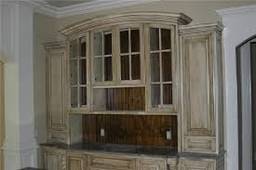Bookshelves and Cabinets

Using Bookshelves and Cabinets to enhance my home
Determining the best location for bookshelves and shelving in your home depends on several factors, including the available space, the layout of your home, and your personal preferences. Here are some common locations where bookshelves and shelving can be fitted:
-
Living Room or Den: This is a popular choice for bookshelves, especially if you enjoy reading or want to display decorative items. You can install built-in bookshelves along one or more walls or opt for standalone bookcases.
-
Home Office: If you have a home office or study, bookshelves can provide valuable storage for books, files, and office supplies. Consider installing shelves above your desk or along one or more walls to maximize vertical space.
-
Bedroom: Bookshelves can also be fitted in bedrooms to store books, personal items, or decorative objects. You can install floating shelves above a bed or dresser or opt for a standalone bookcase.
-
Kitchen or Pantry: In the kitchen, shelves can provide additional storage for cookbooks, dishes, and small appliances. Open shelving can also be installed in a pantry to store food items and kitchen supplies.
-
Hallways or Entryways: Shelving units or floating shelves can be installed in hallways or entryways to display artwork, photos, or decorative items.
As for the type of contractor to hire for this work, you may want to consider a carpenter or a general contractor with experience in cabinetry and woodworking. They can help you design and install custom shelving solutions that meet your needs and complement your home's aesthetic.
When it comes to choosing between real wood and laminated wood for your shelving, there are a few factors to consider:
-
Durability: Real wood tends to be more durable and long-lasting than laminated wood. It can withstand wear and tear better and is less prone to chipping or peeling.
-
Aesthetic: Real wood has a natural beauty and warmth that many people appreciate. It comes in a variety of species, each with its own unique grain patterns and colors. Laminated wood, on the other hand, can mimic the look of real wood but may not have the same depth or authenticity.
-
Cost: Laminated wood is often less expensive than real wood, making it a more budget-friendly option for some homeowners. However, keep in mind that the cost can vary depending on the quality of the materials and the complexity of the installation.
Ultimately, the choice between real wood and laminated wood will depend on your budget, aesthetic preferences, and functional requirements. If you value durability and natural beauty, real wood may be the best option for you. However, if cost is a primary concern or if you prefer a more uniform appearance, laminated wood may be a suitable alternative. Be sure to discuss your options with your contractor and consider factors such as maintenance requirements and longevity before making a decision.

